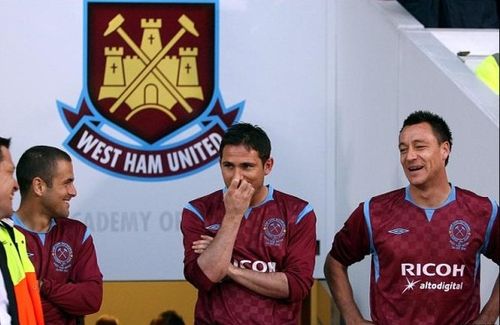
Top Football Academies around the world – West Ham United

What do Lionel Messi, Paul Scholes, John Terry and Wesley Snijder have in common? Other than being the heart beat of their clubs, there is one more similarity that links them. They were all part of the youth set up of their respective clubs and grew up the ranks to become the best in the business. Youth academies have been an integral part of every football club and their importance has grown over the years. Not only do their provide affordable options for the club, they also enable them to groom some of the raw and talented youngsters into the world’s best. With the transfer fees in recent years reaching astronomical figures, it has become more and more important for the clubs to unearth the home-grown talent who can either be a hardcore loyal and go on to be backbone of the club or earn them major profit by their sale to bigger clubs. Here is a look at one of the top football academies in the world which has consistently introduced top talents to the world of football.
WEST HAM UNITED
The name of West Ham may not be in the minds of all when it comes to this department. This is probably due to the fact that bigger clubs tend to snatch their talented players and land them in their backyards. West Ham has constantly believed in their youth system and never failed to deliver. It is famously known as Academy of Football due to its success in spotting and developing the best young talent.
THE ACADEMY OF FOOTBALL

It all began when the then manager, Ted Fenton, established the academy in the 1950s. He was a firm believer in the concept of home-grown talent and developing them into the best players. The Academy approach focused on two things: bringing skilful youth players and ensuring an enlightened passing game on the pitch. Fenton’s talks used to extend for long hours at Cassettari’s - a cafe which was opposite to the Hammers’ Boleyn Ground. It was made an unofficial mess for the players, where the players would exchange views and tactics were developed. It was on Cassettari’s tabletops, and salt and pepper pots that the tactics were illustrated. His successor was the legendary Rob Greenwood, whose acumen led to creation of a golden generation of players including Bobby Moore, Geoff Hurst and Martin Peters. The trio represented England in 1966 and became football-immortals as they inspired England to a World Cup victory. Once Greenwood moved upstairs, new manager John Lyall produced a new breed of young players which included Trevor Brooking and Frank Lampard Sr. who led the Hammers to the 1975 FA Cup victory. It is till date a record due to the fact that it was the only team to win the cup with just English players in the line-up.
Even after their exit, the academy has constantly churned out the best young talent in England, all thanks to one man, Tony Carr. Carr who was the coach of West Ham in 1973 is presently the academy Director and has been referred to by many as an inspiration. He has seen many hopefuls passing through in the past 39 years at the club. Carr’s greatest legacy lies in perhaps switching Rio Ferdinand from a midfielder during West Ham’s FA Youth Cup campaign in 1996, into one the world’s best defenders. Until 2003, the academy was a regular source of players for the Hammers, but their relegation to the second division forced them to sell most of them including Joe Cole, Rio Ferdinand and Jermaine Defoe as a result of which the club was saved from financial impairments. Seven of the players who featured for England in the 2010 World Cup, were a product of the West Ham academy. It is widely argued that had they retained the players, West Ham could have ended up being on of the best teams in England.
Had the players stayed at West Ham, this could have been their present 11:

Ten West Ham academy players who went on to scale new heights:
10. Joe Cole
9. Jermaine Defoe
8. Micheal Carrick
7. John Terry
6. Rio Ferdinand
5. Frank Lampard Sr.
4. Paul Ince
3. Martin Peters
2. Bobby Moore
1. Sir Geoff Hurst